Looking for some sugar glider facts and info to help you decide if they’re the right pet for you?
These adorable little critters are one of the trendiest unique pets, but they’re not for everyone.
Below, we’ll go over the most frequently asked questions to find out how they’ll fit into your life.
Let’s get started!
Table of Contents
Sugar Glider Facts & FAQS
Introducing sugar gliders, we’ll take a look at all of those questions and more in our facts and FAQs below!
1. What, Exactly, is a Sugar Glider?
Yep, just like kangaroos and koalas, they carry their babies in a pouch.
Actually, more like possums, if you want to get super technical.
Their Latin name is Petaurus breviceps, and according to Wikipedia, they’re a “nocturnal gliding possum.”
Check out the video below for a closer look.
RELATED ARTICLE: Sugar Glider Colors and Prices
2. How Big Do They Get?
Sugar Gliders average between 6-8.3 inches long, according to National Geographic. [1]
They’re incredibly light, too, weighing about 4-5.5 ounces as adults.
In other words, they stay fairly tiny, which is why they’re often called “pocket pets.”
Their little bodies practically fit in the palm of your hand (depending, of course, on the size of your hand)!
3. Are Sugar Gliders Good Pets?
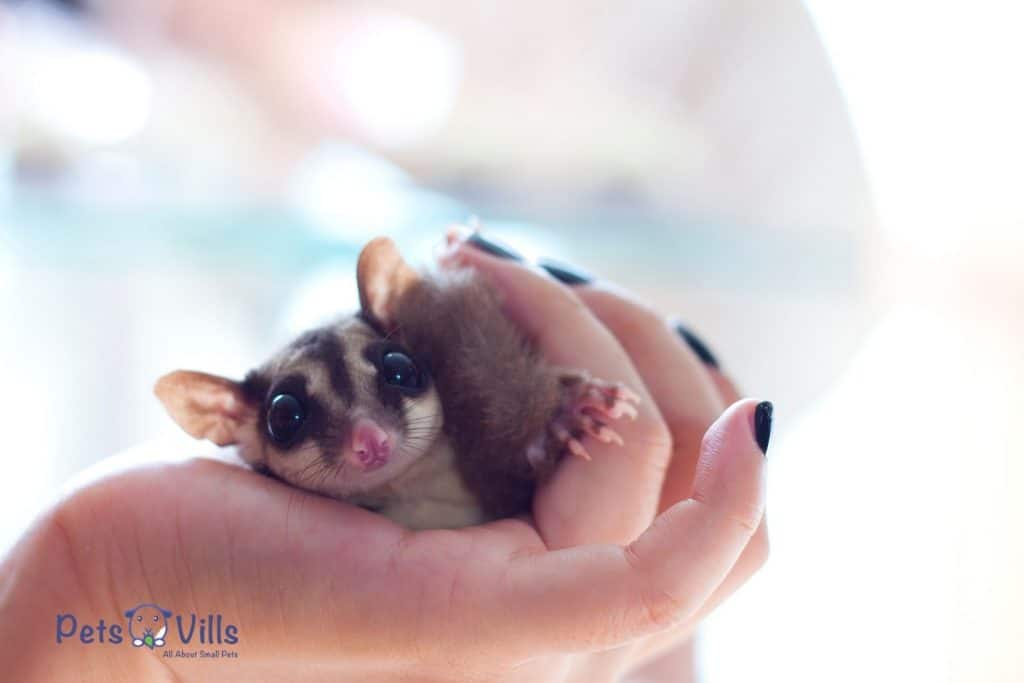
That’s a tough question to answer with a simple yes or no because it really depends on your definition of a “good pet.”
Obviously, sugar glider owners say yes, they make wonderful pets. [2]
They’re full of personality, super sociable, and get along well with people when handled from a young age.
However, as with any pet, it really depends on your overall expectations.
If you want a pet that you can stick in a cage, feed once a day and ignore the rest of the time, then no, they’re not for you.
If you’re willing to take the time to learn how to care for them, though, yes, they can be fantastic pets.
However, while they may be good pets, not all feel that they are ethical pets. So, let’s discuss that FAQ next.
4. Are Sugar Gliders Ethical Pets?
Some pets are just absolutely unethical to own, no questions asked.
We can all agree that tigers don’t belong in houses, or that owls shouldn’t be kept in bird cages.
For example, PetHelpful feels they’re not ethical because “many are farmed and bred from cruelty.” [3]
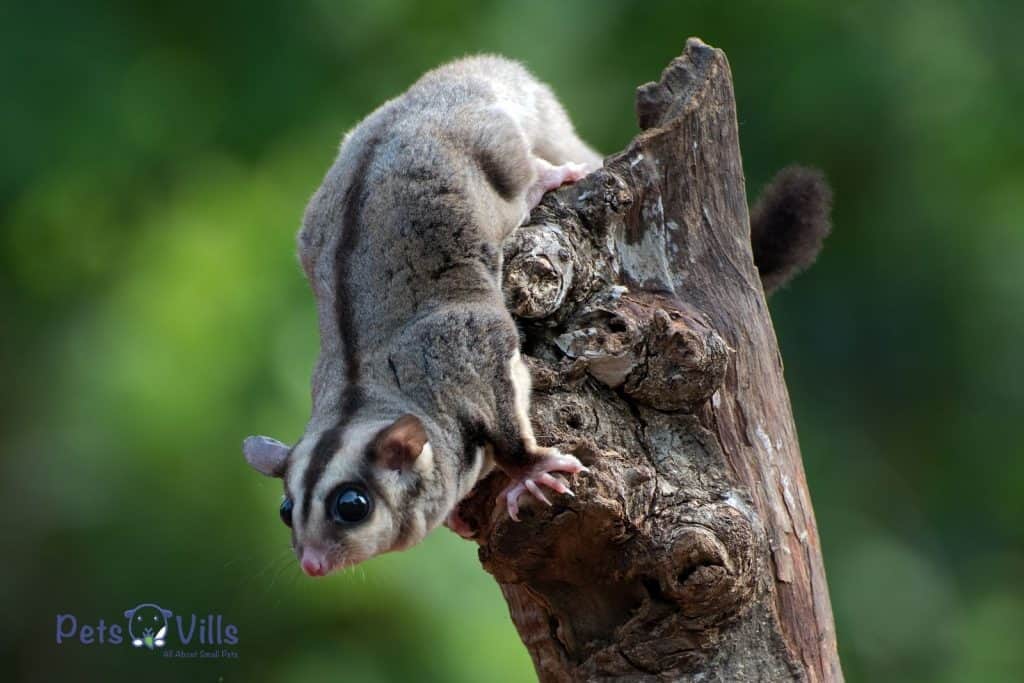
The Dodo agrees, as does the entire nation of Australia- where they are banned as pets. [4]
We try to keep an open mind and be unbiased here (to a point) because we want you to feel comfortable coming to us with questions.
I’d rather you feel welcome and learn the right way to care for a pet than feel like we’re passing judgment on you.
If pressed, though, I’d have to say that Sugar Gliders are only ethical for those who are truly committed to giving them the life they would have in the wild.
5. Are They Hard to Care For?
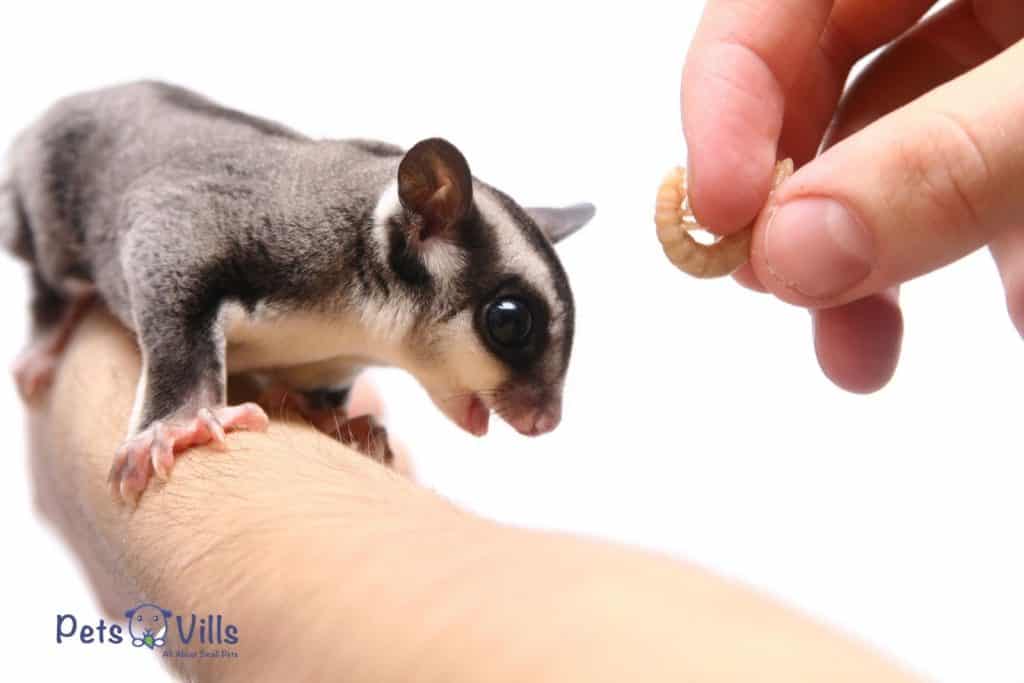
Yes…and no. They’re not as easy as, say, fish, but they’re not as challenging as some exotic pets.
Some say they’re about as challenging (or unchallenging) as cats, as far as their level of care goes.
They do need a lot of room to live happy lives, though.
PetMD explains that they “should be housed in a large sugar glider cages as possible to enable them to jump, leap, and glide around.”
At a bare minimum, they recommend a 3’ x 2’ x 3’ habitat for a single glider.
However (and this is a big however), Sugar Gliders are incredibly social animals.
Like guinea pigs, they just do better in pairs (or even groups of three or more).
That, of course, means you’ll need a larger habitat.
Sugar glider care is about more than just the type of home you give them, so let’s talk about what they eat next.
RELATED ARTICLE: Why Does My Sugar Stink? How to Clean a Sugar Glider?
6. What Do They Eat?
The name “Sugar Gliders” actually comes from the little marsupials’ love of all things sugary.
In the wild, they dine on tree sap and nectar from tasty flowers.
However, like all creatures, they need more than just sweet sappy syrup to stay healthy.
In fact, it’s best to indulge their sweet tooth via fruits more often than not.
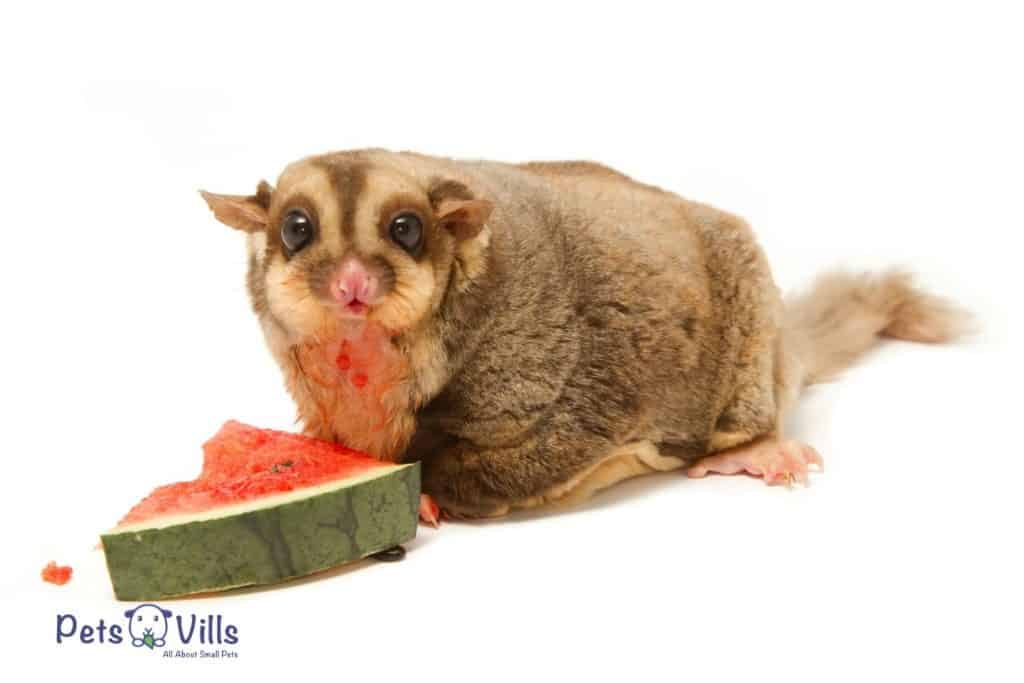
Vet Care Pet Hospital writes, “75% of a sugar glider’s diet should consist of a variety of fruits and vegetables and 25% should be protein. [5]
Some great options for fruits and veggies include bananas, berries, cherries, sweet corn, figs, and oranges.
For protein sources, turn to cooked lean meats like chicken and turkey, hard-boiled eggs, peanut butter, and even tofu.
You can also give them live insects as a treat, although stick with bugs bought from a pet store versus those caught outside.
MUST-READ: Sugar Glider Water Bottles
7. Are Sugar Gliders Dangerous?
This question is actually two- are they dangerous overall and do they bite?
So, let’s cover the first part, then we’ll get to the second.
I consider an animal “dangerous to own” if they’re capable of transmitting nasty diseases to humans.
According to Gliderpedia, Sugar Gliders can transmit quite a few “bugs” to their human caregivers. [6]
These include:
- Giardia
- Salmonella
- Leptospirosis
- Toxoplasmosis
- Streptococcus Anginosus
Of course, other pets can transmit many of these diseases as well. Cats, for example, can transmit toxoplasmosis.
If you have a compromised immune system, then it’s best to talk to your doctor about the potential risks of owning a pet that transmits these diseases.
I also feel that Sugar Gliders are a bad choice for young children.
However, overall, they’re not really any more dangerous than many other exotic pets in the transmittable disease department.
CHECK: Sugar Glider Accessories
8. Do Sugar Gliders Bite?

Now for the second half of “are they dangerous?” are sugar gliders mean?
The answer- is yes. Yep. Absolutely.
PetHelpful explains that not only do they often bite in the beginning, but,
“Their teeth are very sharp and can cause a lot of harm, which means you should be very careful and be fully vaccinated before owning them.
However, Spruce Pets writes that they’re not particularly aggressive pets overall, they just bite when they feel threatened.
So, while the answer is yes, you can take precautions to avoid being on the receiving end of those sharp little teeth.
But if you know how to train sugar gliders, they will be less likely to be dangerous.
Handle your glider with care, give him time to learn to trust you, and pay attention to his “I’m gonna get you” cues.
Here’s a video of a vet explaining how to handle them.
9. What Is a Sugar Gliders Lifespan?
There’s one last question that I always ask before adopting ANY pet: how long will he live?
I am an emotional person when it comes to animals, so I need to prepare myself well in advance for the day that my pet is no longer with me.
Yes, anything can happen and life spans aren’t guaranteed, but still.
So, how long do Sugar Gliders live?
Barring any illnesses, a Sugar Glider can live up to 15 years in captivity, according to Vet Care Pet Hospital.
The average seems to trend around 12 years, though.
Considering they live about as long as a cat or dog, make sure you’re ready for the commitment before adopting one.
Should I Get a Sugar Glider?
Sugar gliders are small, marsupial animals that are native to Australia. These playful creatures have become popular pets in recent years, and it’s easy to see why.
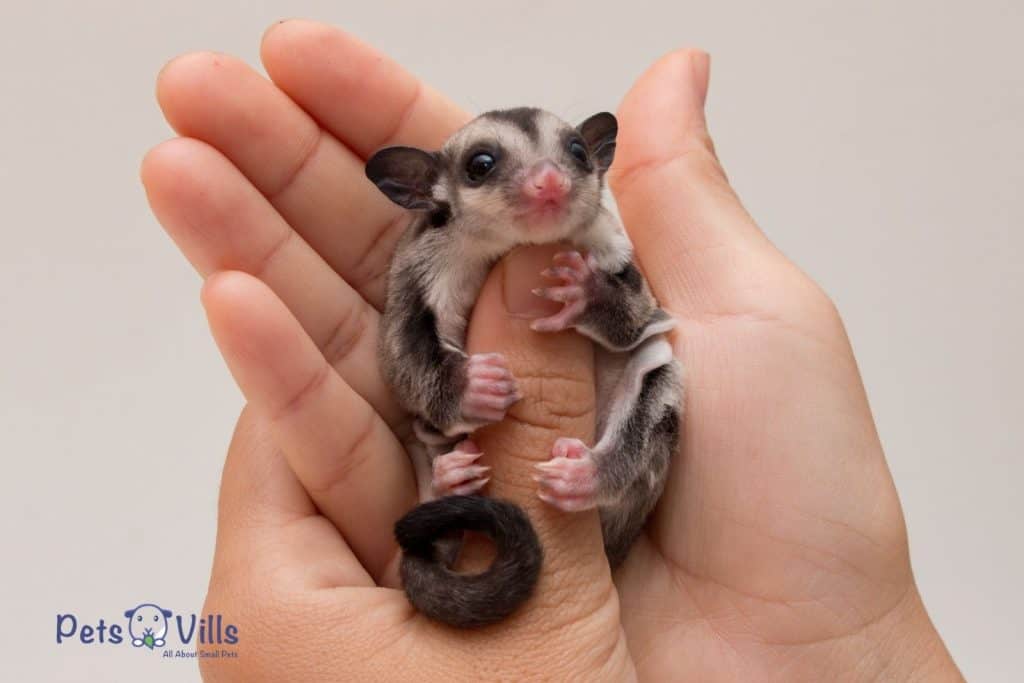
Sugar gliders are relatively low-maintenance, and they can bond closely with their human owners. However, there are also some drawbacks to owning a sugar glider.
These animals require a special diet, and they are nocturnal creatures that can be quite active at night.
If you’re considering getting a sugar glider, it’s important to do your research and make sure you’re prepared to provide the care they need.
But if you’re looking for a fun and unique pet, a sugar glider may be the perfect companion for you.
And with all the information I’ve given you, you can now make an informed decision on whether this furry critter is the pet for you.
I recommend bookmarking this page, as we’ll add links to each guide to make them easy to find!
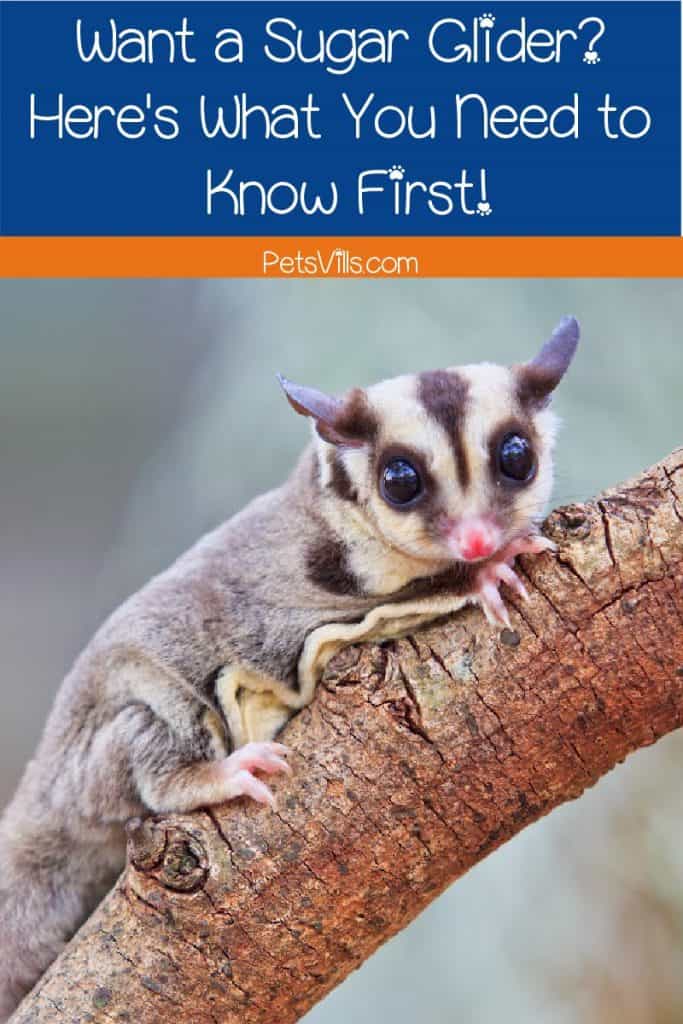
In the meantime, do you have any other Sugar Glider facts to add? Any questions? Share below!
Resources
- 1. Sugar Glider [Internet]. Nationalgeographic.com. 2018. Available from: https://www.nationalgeographic.com/animals/mammals/s/sugar-glider/
- 2. Do Sugar Gliders Make Good Pets? How to Care for a Sugar Glider? – Petful [Internet]. https://www.petful.com/. [cited 2022 May 11]. Available from: https://www.petful.com/other-pets/sugar-gliders-good-pets/#:~:text=All%20things%20considered%2C%20yes%2C%20a%20sugar%20glider%20could
- 3. ThePetMaster. 10 Reasons Why Sugar Gliders Should Not Be Kept as Pets [Internet]. PetHelpful. PetHelpful; 2015. Available from: https://pethelpful.com/exotic-pets/Reasons-why-Sugar-Gliders-should-not-be-kept-as-Pets
- 4. Sugar Gliders Are Not Pets [Internet]. The Dodo. [cited 2022 May 11]. Available from: https://www.thedodo.com/sugar_gliders_are_not_pets-332162416.html
- 5. VetCare Pet Hospital [Internet]. VetCare Pet Hospital. 2016. Available from: https://www.vetcarepethospital.ca/beginners-guide-sugar-glider-care/
- 6. Sugarglider.com – Gliderpedia – Zoonosis [Internet]. www.sugarglider.com. [cited 2022 May 11]. Available from: http://www.sugarglider.com/gliderpedia/index.asp?Zoonosis#:~:text=Zoonosis%20refers%20to%20any%20disease%20that%20can%20be




![Cute Sugar Glider Drinking From The Bottle [Must-Watch Video]](https://petsvills.com/wp-content/uploads/2022/09/Cute-Sugar-Glider-Drinking-From-The-Bottle-Must-Watch-Video-211x150.jpg)
